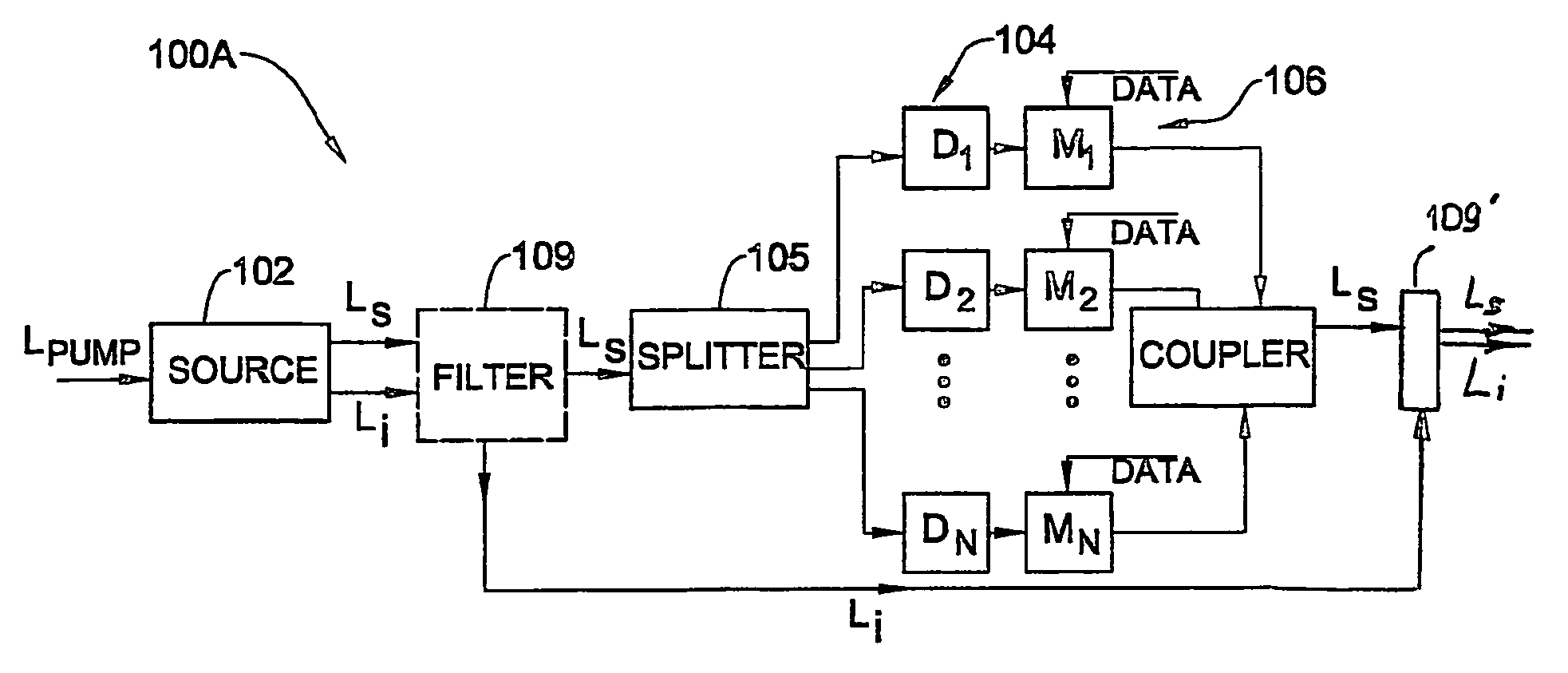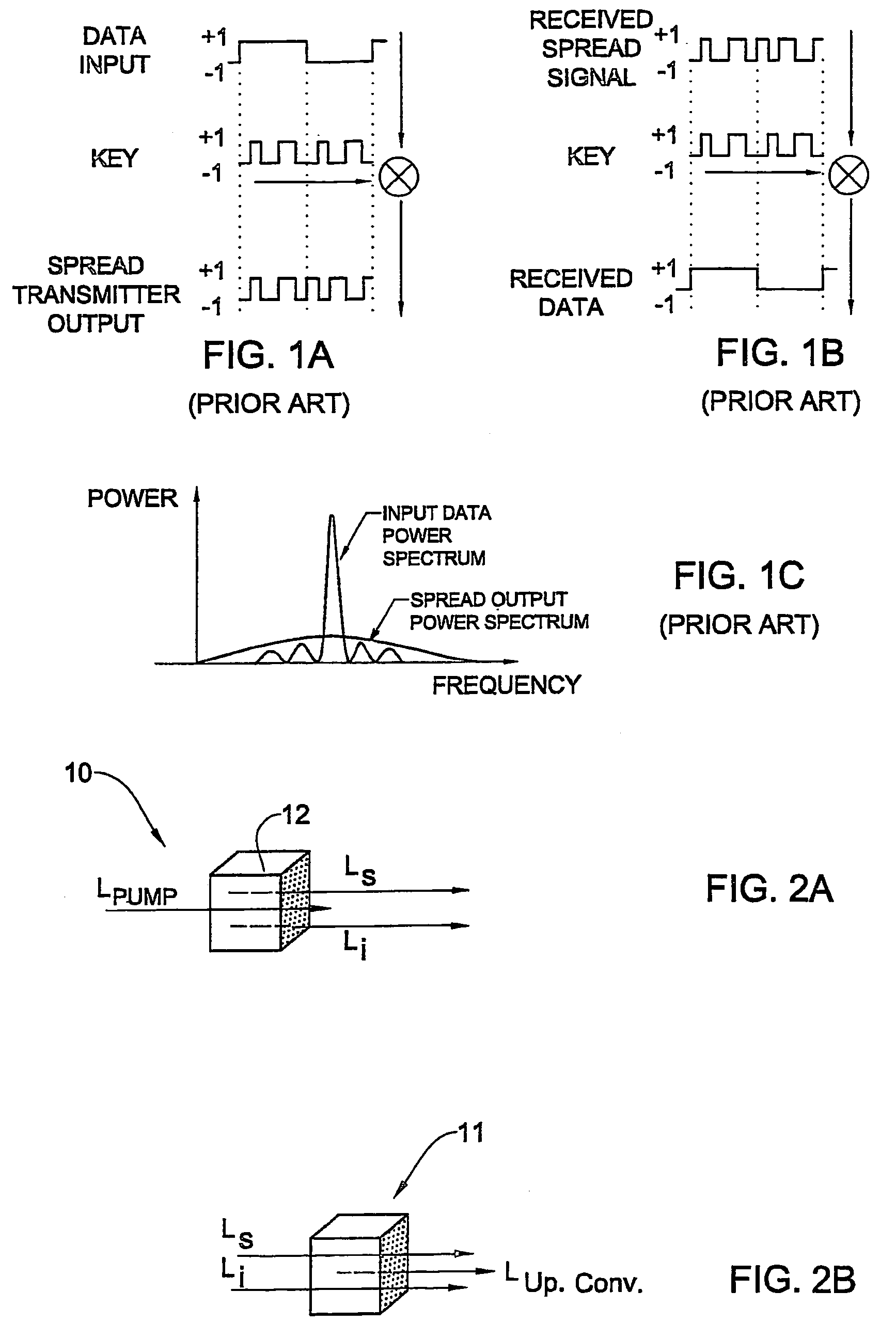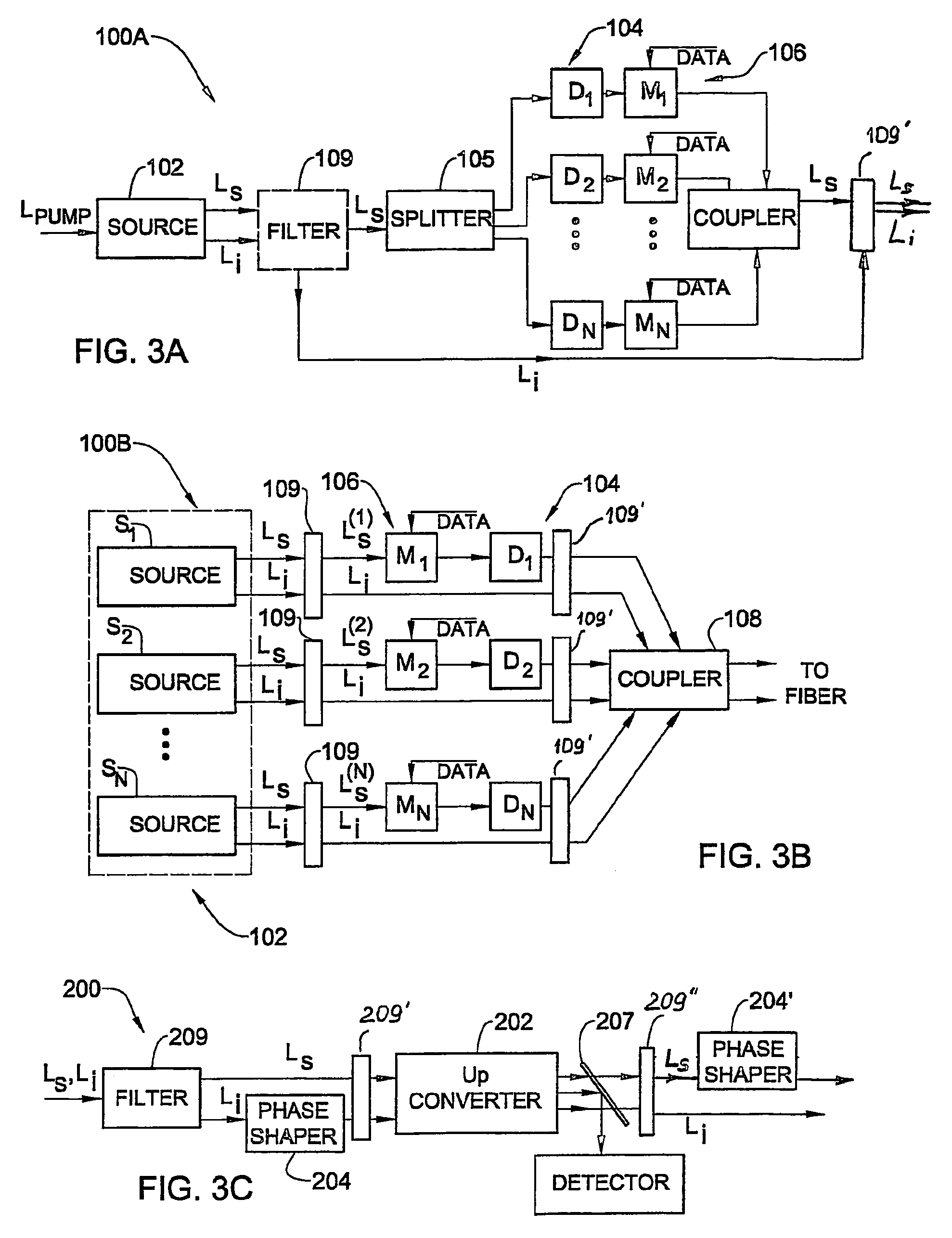Method and system for use in optical code division multiple access
a technology of optical code and multiple access, applied in the field of optical communication, can solve the problems of generating pseudo-noise keys, unable to generate keys electronically, and unable to achieve broadband noise-like re, etc., and achieves the effect of suppressing mode competition in the cavity, low threshold, and high efficiency configuration
- Summary
- Abstract
- Description
- Claims
- Application Information
AI Technical Summary
Benefits of technology
Problems solved by technology
Method used
Image
Examples
Embodiment Construction
[0084]An entire CDMA scheme typically consists of the key generation, and multiplexing / demultiplexing communication channels at the data transmitting and data receiving sides.
[0085]Referring to FIGS. 2A and 2B, there are schematically illustrated the main principles underlying the optical CDMA key generation scheme according to the invention enabling to generate both an ideal key (broadband noise) and its complex conjugate. FIG. 2A shows a process of parametric down conversion that is utilized for the CDMA key generation in either a data transmitting system or data receiving system, generally at 10. As indicated above, the down conversion process used in the CDMA key generation technique according to the invention is any known physical process consisting of emitting two broadband fields that are complex conjugates of each other, in which a pair of correlated photons is emitted, such that the sum of their energies is well defined although the energy of each photon is undefined (e.g.,...
PUM
| Property | Measurement | Unit |
|---|---|---|
| length | aaaaa | aaaaa |
| length | aaaaa | aaaaa |
| threshold intensity | aaaaa | aaaaa |
Abstract
Description
Claims
Application Information
 Login to View More
Login to View More - R&D
- Intellectual Property
- Life Sciences
- Materials
- Tech Scout
- Unparalleled Data Quality
- Higher Quality Content
- 60% Fewer Hallucinations
Browse by: Latest US Patents, China's latest patents, Technical Efficacy Thesaurus, Application Domain, Technology Topic, Popular Technical Reports.
© 2025 PatSnap. All rights reserved.Legal|Privacy policy|Modern Slavery Act Transparency Statement|Sitemap|About US| Contact US: help@patsnap.com



